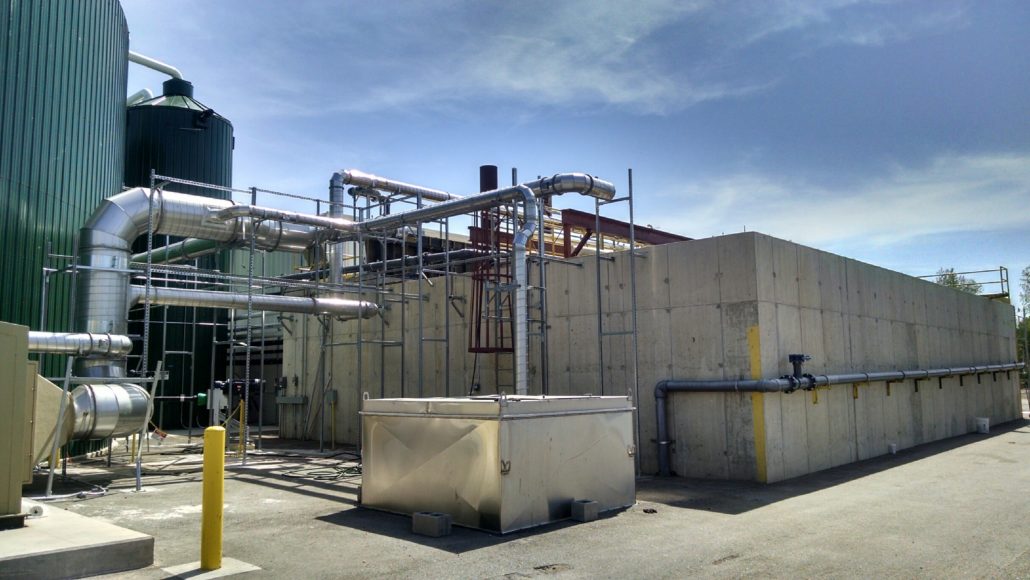Written by: Brooke DeBaar
There has been a lot of buzz within the past few years about how to move away from the conventional power generated from coal-fired and nuclear power plants. In Michigan, we have seen momentum in energy produced from solar and wind. However, in my opinion, there is one other form that is left out of the renewable energy discussion, which is biodigestion/anaerobic energy production.
Some of you are probably wondering what a biodigester is, right? It is a renewable energy system which holds a mixture of organic waste and micro-organisms in an anaerobic (no oxygen) environment called a digester tank. The organic waste and micro-organisms produce a bio-gas, which is a mix between methane and carbon dioxide. The bio-gas that is generated turns a turbine to create electricity. The leftover organic waste is typically used for fertilizer in commercial agriculture. Biodigesters can come in a variety of different sizes, ranging from small scale for home use to produce cooking gas and garden fertilizer, to a large commercial size that can power neighborhoods and cities.
West Michigan has been home to several digesters:
>> Grand Rapids had a biodigester in the 1920’s to help power the wastewater treatment plant and other city buildings. It was in operation until the 1970’s when the city switched to another method due to the micro-organisms dying out as a result of new pollutants found in the waste that was coming to the plant.
The biodigester plant in Lowel malfunctioned due to a design flaw which created an unpleasant odor that the plant could not get under control. Ultimately, the facility was shut down in late 2016 after being in operation for approximately 11 months. As of June, 2017, Advanced Water and Energy Solutions LLC had purchased the biodigester and has plans in to start processing wastewater from the Litehouse Food plant. Advanced Water and Energy Systems plans on investing $1 million for improvements such as carbon filters to pull contaminates from the air to prevent odor, and solar panels placed on the pretreatment tanks. However, as of January 2018 the plant is still not operational.
>> Grand Rapids just broke ground in December 2017 to build a new biodigester to divert waste from Kent County Landfill that comes from Founders Brewing Company, Amway, and Coca-Cola. The Kent County Landfill is projected to be at capacity in about a decade, and this new digester is a great way to help keep food waste out out of the landfill and to create additional energy for the community to use in the process. The city has plans in place to help control the odor by pushing the bio-gas through a carbon filter, similar to the process that is already in place at the wastewater treatment plant.
>> In Fremont, a biodigester is being reopened after being shut down due to funding two years ago. The power generated will be enough to power 2,500 homes annually. The leftover waste of approx 120 gallons per day will be used as organic fertilizer for local farms.
>> Michigan State University even has a biodigester! They opened their biodigester back in 2013, which takes in waste from its farms and campus dining halls, as well as fruit and vegetable waste from the Meijer Distribution center. This waste generates 2.8 million Kilowatts, which is used to generate power for several buildings on campus per day. The biodigester is projected to pay for itself in 15 years, making it a great way to save on future energy costs.
As long as they are designed properly, biodigesters should produce no odors, which makes them a possibility for use in urban environments, and it’s clear that biodigesters are a way to produce renewable energy and keep waste out of our landfills. Who knows, maybe in the future we will see more biodigesters in our West Michigan landscape!


